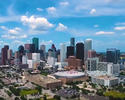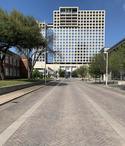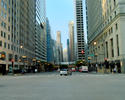Californians escaping high taxes dominate the real estate news. Yes it is true, leaving California because of high city, county and state income tax for Dallas and Texas, with no income tax, is a motivation, but last on my list of seven reasons why people are moving from Los Angeles to Dallas. People will pay more to live where they like living, whether that means higher taxes, higher home prices or higher cost of living. People will leave a place they do not enjoy if they can afford to. This is the case with Angelenos. Residents have found Los Angeles increasingly unpleasant. read more »
Dallas
Reasons People Are Moving From Los Angeles to Dallas — More Important Than Escaping Higher Taxes
New Zealand Adopts Texas MUDs
New Zealand home prices are among the highest in the world relative to incomes and rents, with the capital city of Auckland having a median home price of $830k and a house price to income median multiple of 8.6 – in contrast to Houston’s far more affordable 3.6 - as documented in the Annual Demographia International Housing Affordability Survey. These prices have been growing at one of the fastest rates in the OCED: 266% since 1991. read more »
Pandemic Changes More Than Where We Work and Live
Pandemic Changes Congestion
Until the pandemic, people’s choices were largely shaped by their workplaces and commutes. A 25-minute drive to work could become an hour and a half at rush hour. read more »
Texas is Still Texas — For Now
For a generation, Texas has been the stronghold of the Republican Party. Democrats hoped to break its grip this year, but despite media fixation on a new, Democratic Texas, the state is not about to turn blue, as some progressives believe—though a purple future seems plausible. read more »
- Login to post comments
Two Decades of Interstate Migration
America is still a mobile nation. Back in the 2000-2010 decade, 12.9 million people moved interstate, nearly five percent of the total population. In the 2010s the population has been a bit less mobile, with net domestic migration of 11.7 million residents, slightly under four percent. Nonetheless, 11.7 million is a large number. This is nearly equal to the population of Ohio, with only five states being larger read more »
- Login to post comments
The Heartland's Revival
For roughly the past half century, the middle swath of America has been widely written off as reactionary, backward, and destined for unceasing decline. read more »
- Login to post comments
Economy Loses Jobs Equal to Metro New York, Los Angeles, Chicago, and DFW
The economic distress resulting from the COVID-19 pandemic and strategies to limit its spread have been substantial. The most intense effects have been inflicted on the estimated 26 million workers who have lost their jobs, either temporarily or permanently. Many businesses may not be able to recover, while others may never be restored to their previous employment, as customer revenues take years to recover. read more »
- Login to post comments
Revealed Preferences: The 30-Minute Commute
The principal reason that large cities have developed is that they provide large labor (and housing) markets. A labor market is also a housing market, since virtually all who work in the metropolitan area also live there. The metropolitan area is the one location where there is one-to-one balance between jobs and resident workers (see: Alain Bertaud, Order Without Design: How Markets Shape Cities). read more »
- Login to post comments
Of Niche Markets and Broad Markets: Commuting in the US
The six transit legacy cities - mostly urban cores that grew largely before the advent of the automobile - increased their concentration of transit work trips to 57.9% of the national transit commuting, according to the 2018 American Community Survey. At the same time, working at home strengthened its position as the nation’s third leading mode of work access, with transit falling to fourth. The transit commuting market share dropped from 5.0% in 2017 to 4.9% in 2018. read more »
- Login to post comments
The City Of Dallas Needs A Homebuilding Boom To Ensure Economic Success
While the North Texas economy is booming, the core city of Dallas faces challenges bedeviling other cities: a dwindling middle class, bifurcation into neighborhoods of haves and have-nots, and an emerging home affordability problem. read more »
- Login to post comments





















